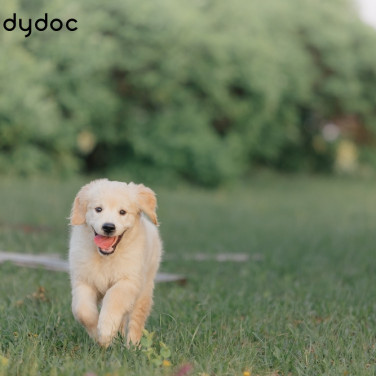DISEASES
Oronasal Fistula in dogs - Complications, Symptoms, and Treatments
페이지 정보
본문


What is an oronasal fistula (ONF) in dogs? What is the difference between an oroantral fistula (OAF)?
Oronasal fistula refers to a disease in which an abnormal hole forms between the oral and nasal cavities. Oroantral fistula, on the other hand, refers to an abnormal connection between the upper fourth premolar and the molar teeth. Fistulas are typically caused by damage to the tooth root and surrounding tissue, resulting in a passageway into the mouth and other areas. An oronasal fistula typically occurs in the front teeth (incisors, canines, and anterior premolars), while an oroantral fistula occurs in the back teeth (posterior premolars and molars). Oronasal fistulas are more common than oroantral fistulas in dogs.
These types of fistulas are usually caused by severe periodontal disease or tooth loss. Infections caused by periodontal disease can lead to chronic infections of the nasal cavity. Treatment for both of these types of fistulas typically requires surgery and may involve extraction if the fistula is caused by a specific tooth.

Causes of oronasal and oroantral fistulas in dogs
Causes of both of these types of fistulas include:
-
Severe periodontal disease
The most common cause is inflammation of the gums and bones surrounding the teeth. This weakens the tissue supporting the teeth and creates a hole connecting the oral and nasal cavities around the teeth.
-
Complications after a tooth extraction
-
Trauma
Tooth loss, foreign body penetration, and bite wounds can cause fistulas in the mouth.
-
Neoplasia
-
Congenital cleft lip & cleft palate
Oronasal fistula in dogs symptoms and signs
Symptoms that may occur with oronasal fistulas and oroantral fistulas include:
-
Swelling and redness of the gums
-
Tartar buildup
-
Bad Breath
Through the fistula, liquid and food from the mouth pass into the respiratory tract, causing inflammation and infection in the respiratory tract.
-
Sneezing
-
Chronic runny nose (may be accompanied by bleeding)
Oral pain can occur if there are periodontal disease, wounds, tumors, etc., which are the main causes of fistulas.
Signs of mouth pain in dogs:
- Refusal to chew on snacks, toys, etc.
- Chews on one side of their mouth or keeps dropping snacks or toys
- Scratching the affected area of the face with their paw or rubbing it on the floor
- Avoiding or showing aggression to touching their face
Risk of oronasal fistulas in dogs
Dogs with severe periodontal disease are more likely to develop fistulas. Long-headed breeds, particularly dachshunds, have a higher susceptibility to oral fistulas due to their muzzle being longer than their skull.
Home treatment for oronasal fistulas in dogs
In the case of oronasal and oroantral fistulas, surgical correction is required for this condition. If symptoms are present or a hole in the mouth is observed, it is necessary to seek treatment by visiting a hospital.
Diagnosis process of oronasal and oroantral fistulas
When you take your dog to the veterinary hospital due to an oronasal or oroantral fistula, the following tests can be performed to accurately diagnose your pet’s condition.
-
Oral exam
Check the condition of the teeth, gums, and bones inside the mouth visually. If the fistula is large, it can be identified during this process.
-
Fistula patency test
Directly confirm patency by injecting saline or fluorescein dye into the fistula.
-
Dental X-ray
A pre-surgery examination is performed to establish a treatment plan. During the examination, anesthesia is administered, and an examination of the teeth, gums, and bones is conducted. In some cases, blood tests and chest X-rays may be required to determine the use of anesthesia.

Treatment process for oronasal and oroantral fistulas in dogs
Fistulas require surgical treatment and are typically covered with gums pulled and folded back to close the hole between the mouth and the respiratory tract. This procedure, known as gingival flap surgery, involves using gum tissue around the fistula to cover and suture it.
If a fistula is related to a specific tooth, the tooth is extracted, disinfected, and the gums are then sutured. It is recommended that dogs eat soft foods for 1-2 weeks after tooth extraction. In cases of infection, antibiotics and antifungals are administered as appropriate, and in severe cases of chronic infection, the nasal cavity may be washed with a nasal microscope, with treatment being performed through culture and susceptibility testing of the causative infectious agent. Additionally, antibiotics, anti-inflammatory drugs, and pain relievers may be prescribed to relieve symptoms.
The prognosis for fistula treatment is generally very good if the underlying cause of the fistula is corrected. However, if the cause of the fistula is a tumor or a birth defect, the prognosis may vary. In some cases, after surgery, full recovery occurs within 1 to 2 weeks without complications. However, sometimes the surgical site may reopen if the area covering the fistula is under pressure as the dog breathes into the respiratory tract. In such cases, it is important to consult with your veterinarian to determine whether to allow the scar to close on its own or to proceed with reoperation.
How to prevent oronasal and oroantral fistulas in dogs
Fistulas are typically caused by inflammation, such as periodontal disease. It is crucial to maintain proper oral hygiene through regular brushing and to schedule regular dental check-ups to prevent the development of fistulas.
Find out more about your dog’s disease or symptoms in the Buddydoc Library!

The Buddydoc library is filled with everything you’d want to know about each symptom and disease your pet may experience. If you would like to find out more about the causes, signs, treatments, preventions, and more for your dog’s disease. Try out the Buddydoc app and search your pet’s symptom or disease in the Buddydoc library.












